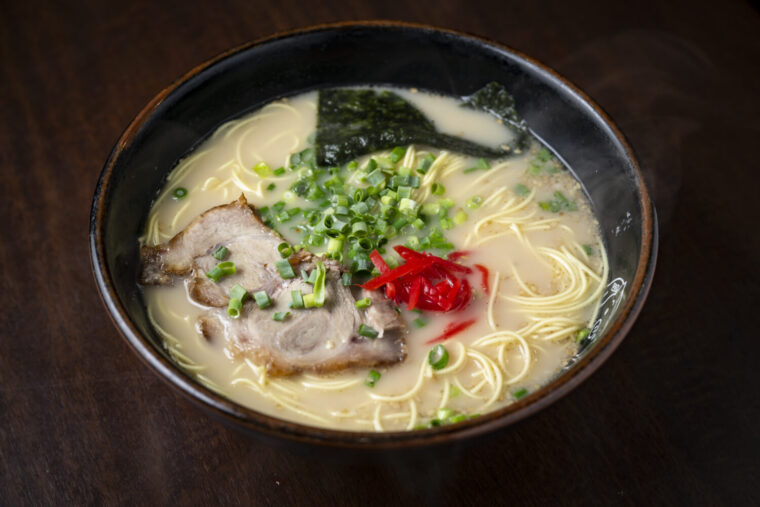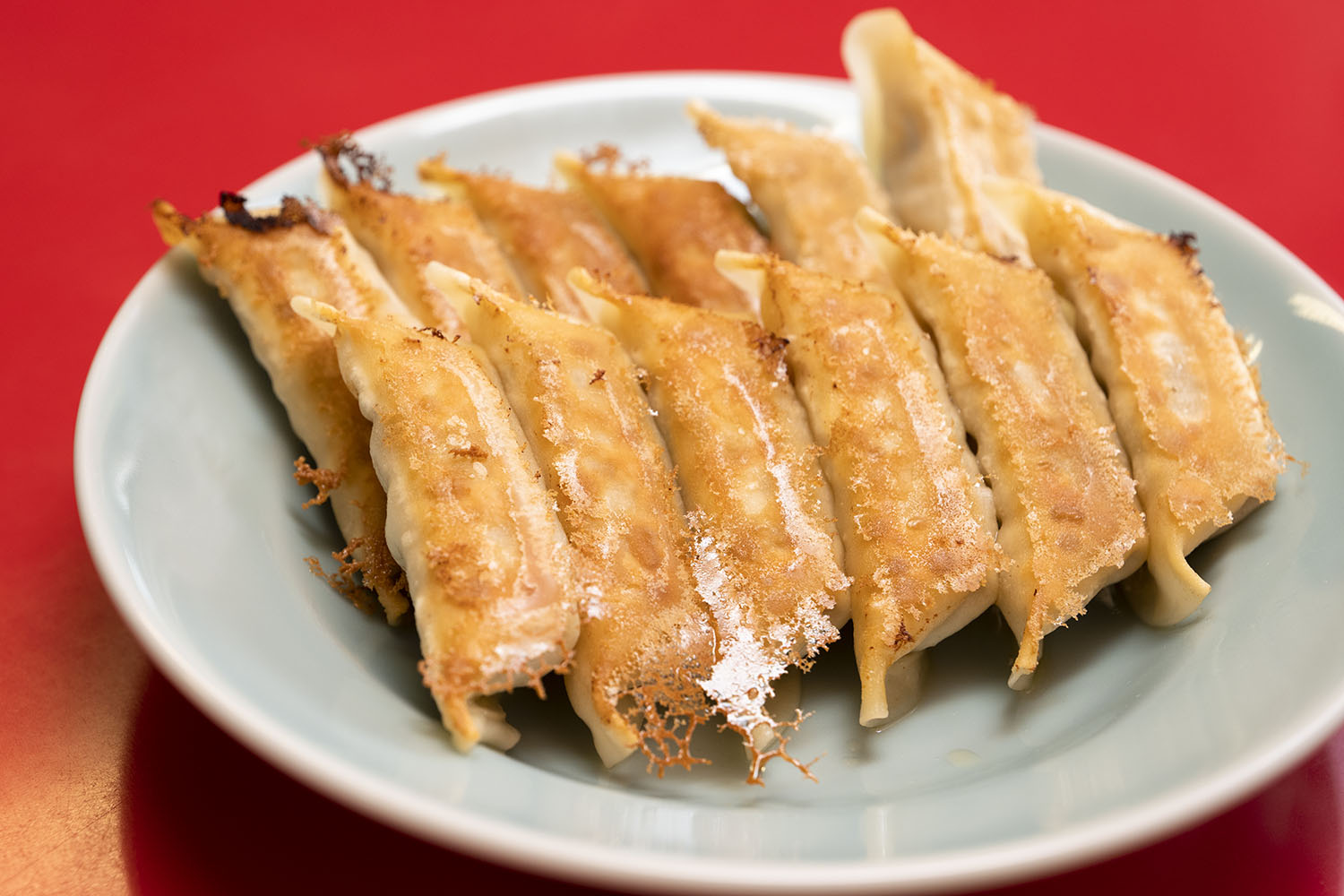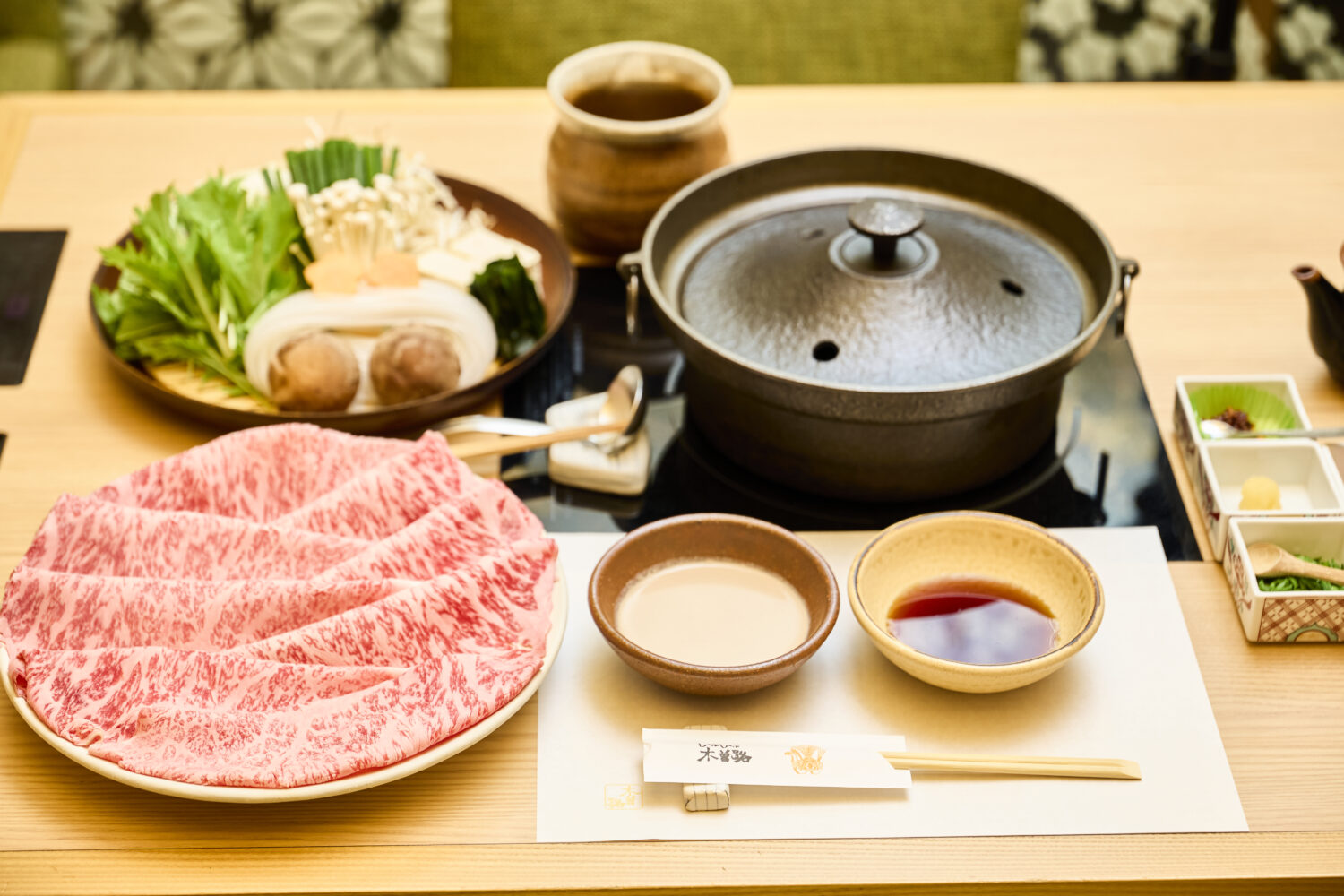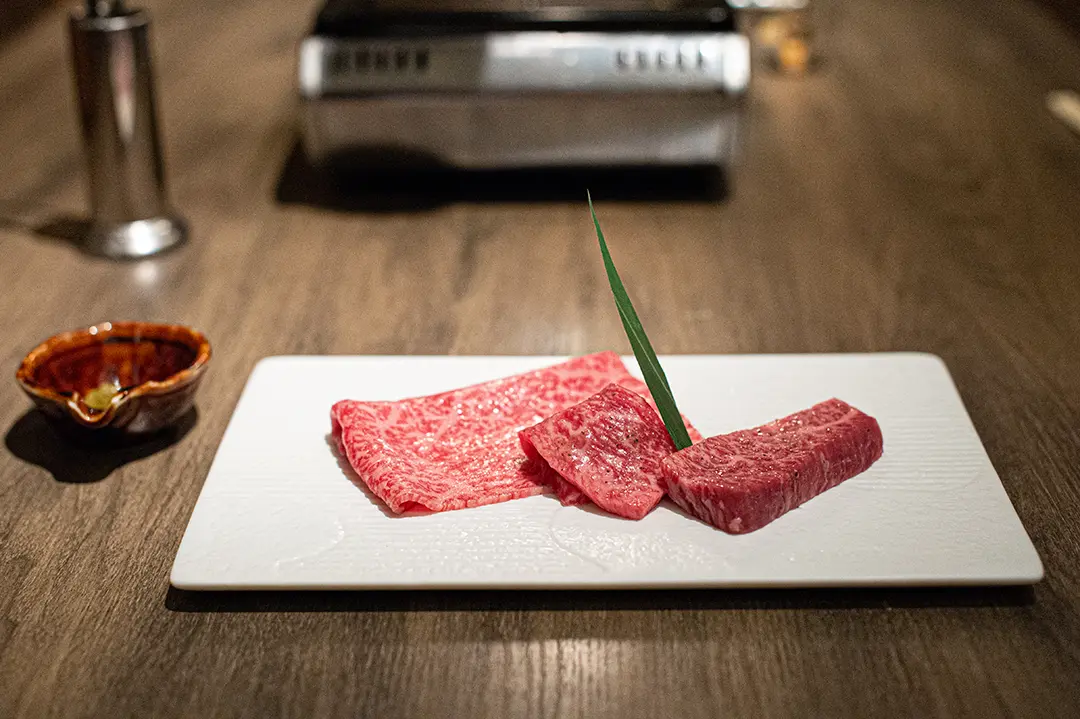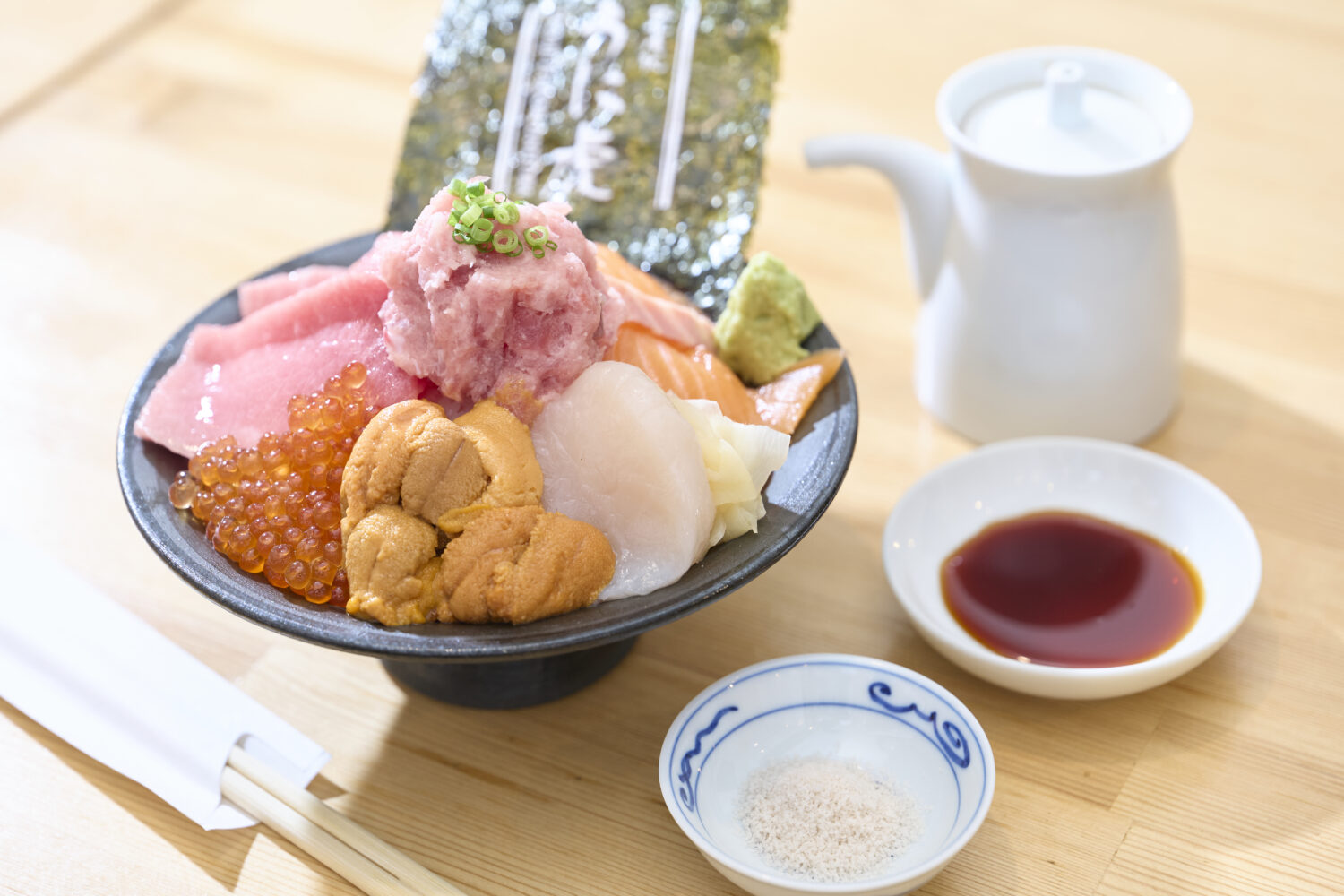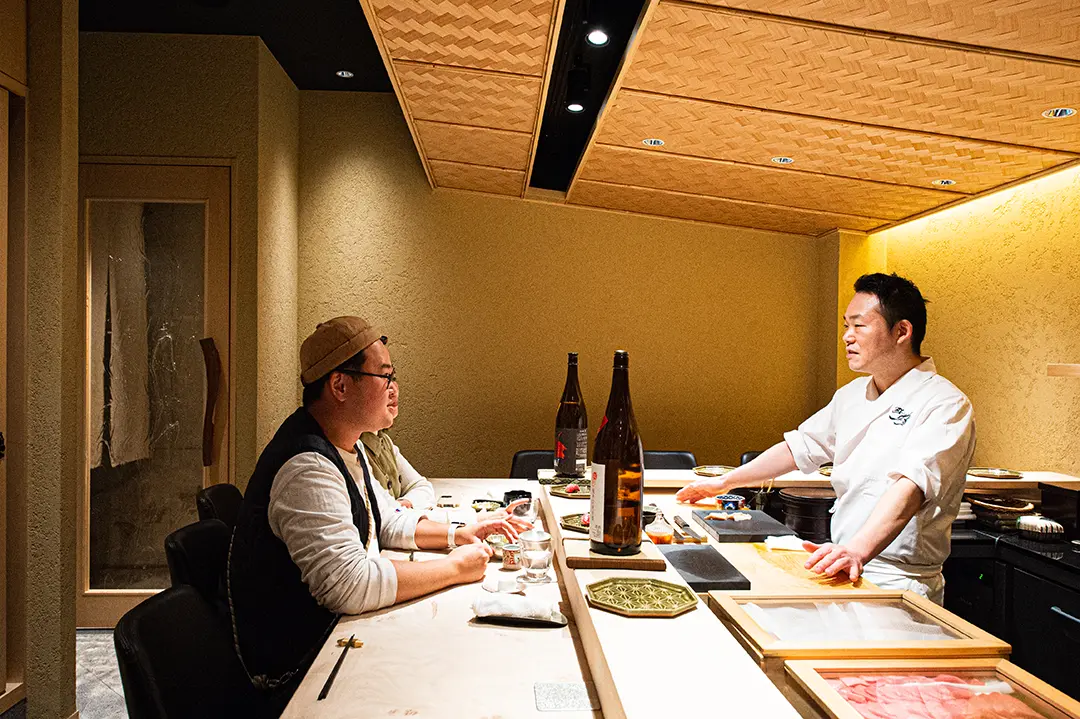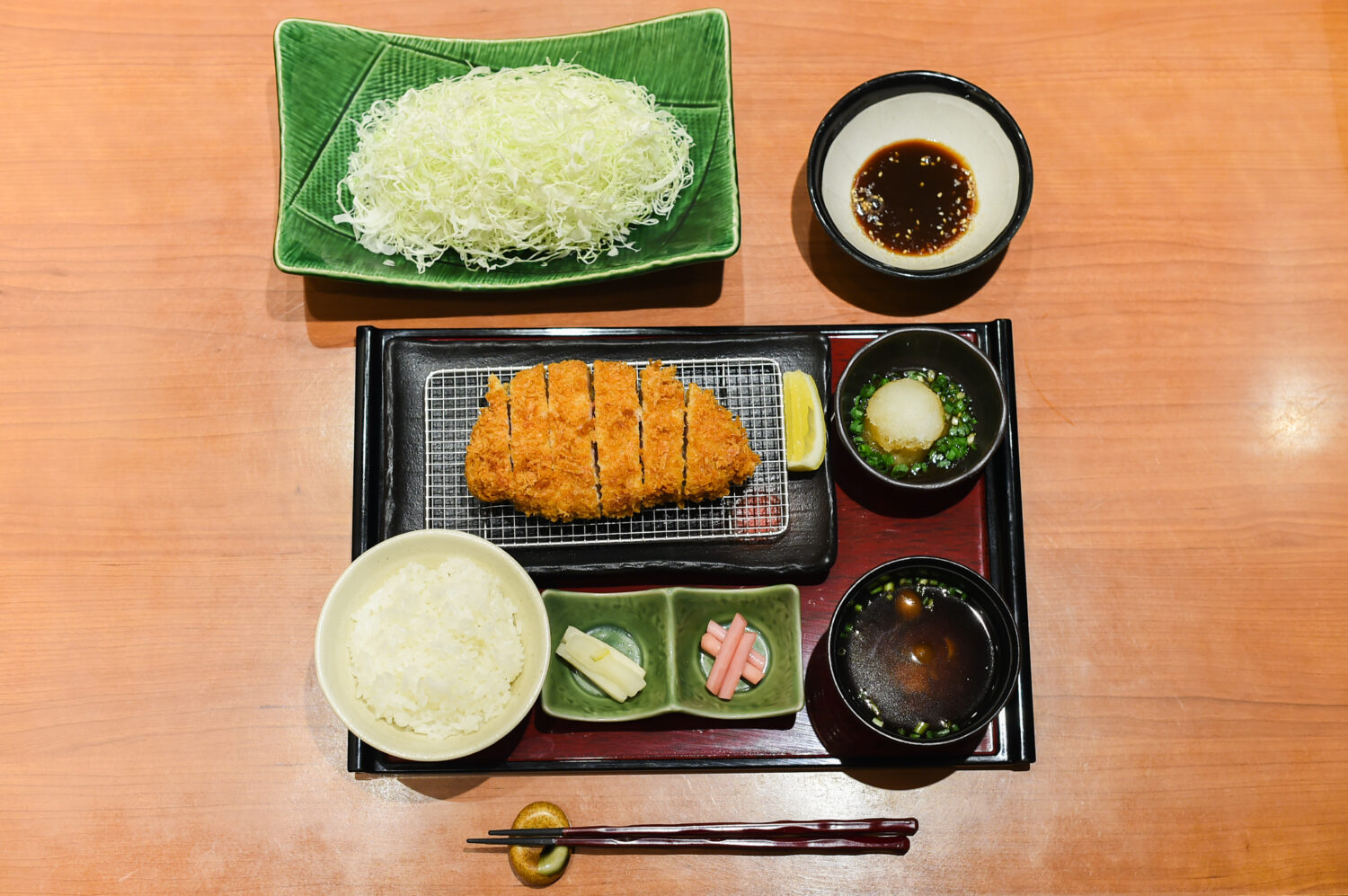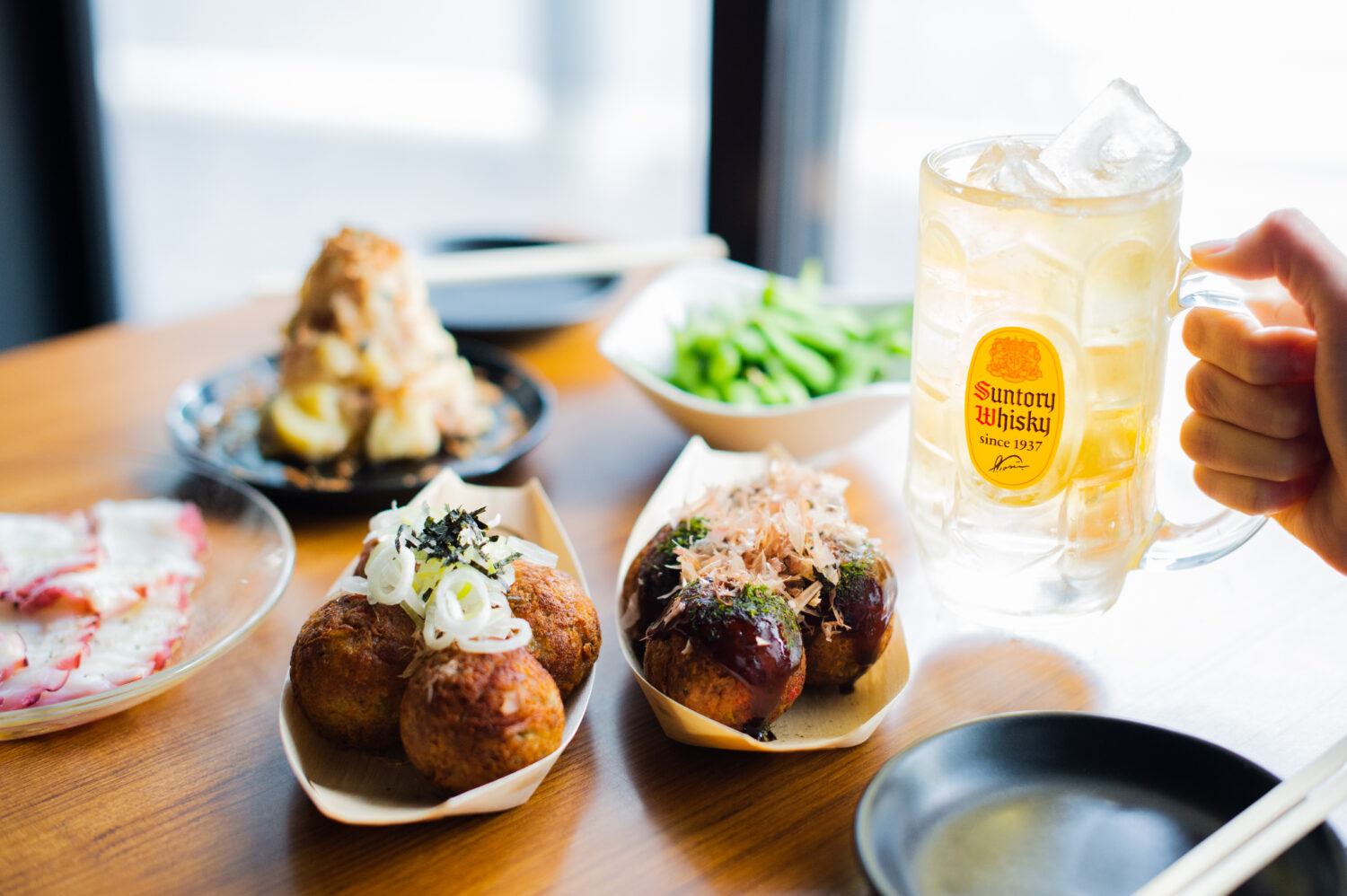
6 Local foods in FUKUOKA | Karashi mentaiko, Motsu nabe, Hakata ramen, Guruguru torikawa, Mizutaki, and Gobo-ten udon
The city of Fukuoka has a rich international heritage – its history of exchange with continental China and the Korean Peninsula reaches back to the Heian period (794-1185). A unique local culinary culture has been established using foods originally learned from nearby countries, such as mizutaki (chicken hot pot) and karashi mentaiko (spicy cod roe). The region’s thriving fishing and aquaculture industries have also contributed a wide range of fish dishes to the local foodscape.
Table of Contents
- 1 Poppable texture and spicy flavor “Karashi mentaiko”
- 2 The plump and juicy offal is addicted! “Motsu nabe”
- 3 Popular to order BARIKATA & KAEDAMA “Hakata Ramen”
- 4 Be careful not to eat too much! “Guruguru torikawa”
- 5 The rich chicken soup is irresistible “Mizutaki”
- 6 Soft and chewy noodles with flavor of burdock root “Gobo-ten udon”
Poppable texture and spicy flavor “Karashi mentaiko”
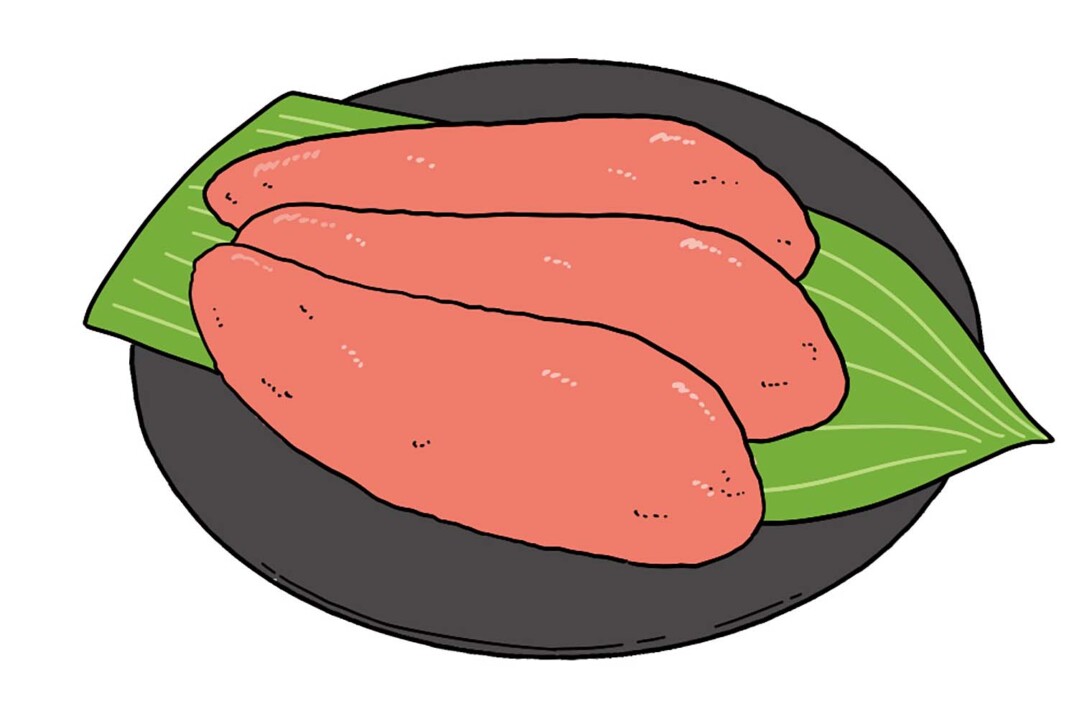
Karashi mentaiko, cured cod roe seasoned with chili, originally comes from the Korean Peninsula. Japanese who lived in the Korean Peninsula during the Pacific War brought this food back to Fukuoka, from where it spread through Japan.
In the Korean Peninsula, the walleye pollock is known as myeongtae, inspiring the people of Fukuoka to use the name mentaiko, with the suffix “ko” often used to refer to the eggs of fish or seafood.
Karashi mentaiko consists of walleye pollock roe cured in a seasoning mixture which includes chili. This versatile ingredient can be arranged in a wide variety of ways, whether alongside steamed rice or used to dress pasta.
The plump and juicy offal is addicted! “Motsu nabe”
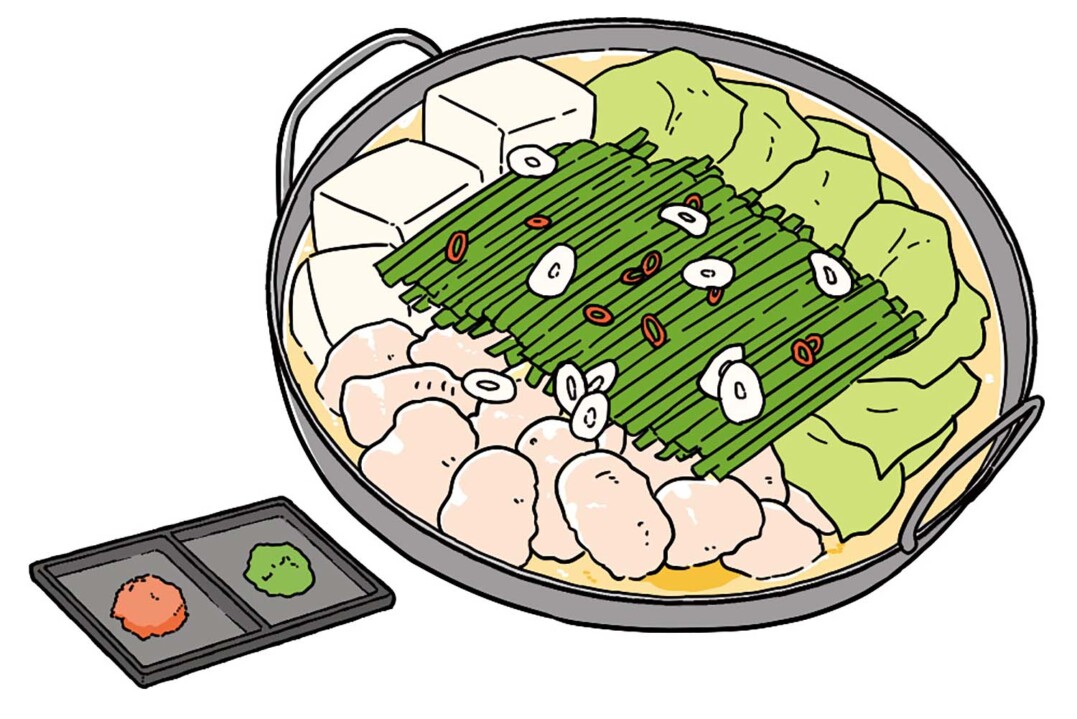
Motsu broadly refers to organ meats except liver. It is said that when Japan faced food shortages following the Second World War, these organ meats, which had not been eaten before, were prepared by simmering in aluminum pots, then dipped into soy sauce, giving rise to motsu nabe (offal hot pot). Nowadays, this iconic dish starts with dashi (Japanese soup stock) made from katsuo (skipjack tuna) and kombu (kelp), with seasonings such as soy sauce and miso added, creating a soup to simmer ingredients such as beef or pork organ meats, nira (garlic chives), cabbage, and taka no tsume (hot red chili). After enjoying the ingredients, the classic finish is adding chanpon-men (a style of noodle from Nagasaki) to the remaining soup. This popular dish is of course available at restaurants, but you’ll also find take-home versions sold as souvenirs at stations and airports.
Popular to order BARIKATA & KAEDAMA “Hakata Ramen”
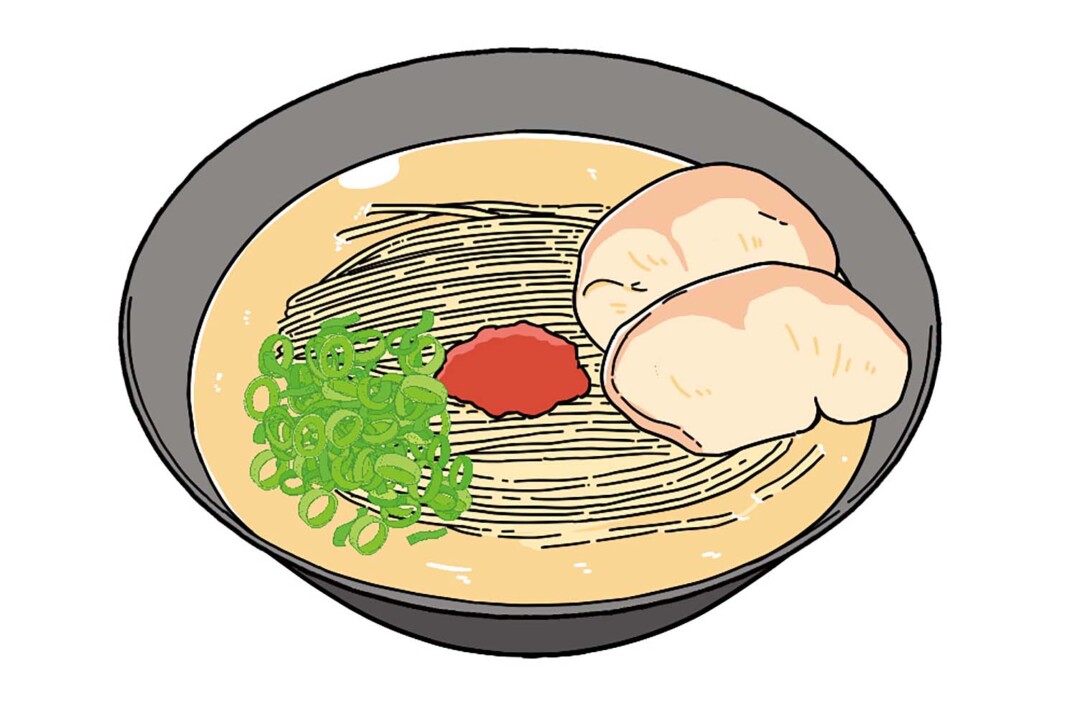
Hakata Ramen is characterized by its rich and deeply flavorful tonkotsu (pork bone broth) soup. This dish has been enjoyed since around 1940, and was originally served at what is thought to be the first ramen cart in Hakata. This style can be recognized by slender noodles served in an opaque, white soup. When Fukuoka locals order this dish, it’s most popular to order the noodles “barikata”, which is Hakata Ramen jargon for “firm”. When you run out of noodles, request “kaedama” for an extra order of noodles added to your remaining soup. That’s the perfect time to experiment by changing up the flavor with the provided sauces and condiments, such as beni shoga (red pickled ginger) and karashi takana (pickled and fried mustard greens).
Be careful not to eat too much! “Guruguru torikawa”
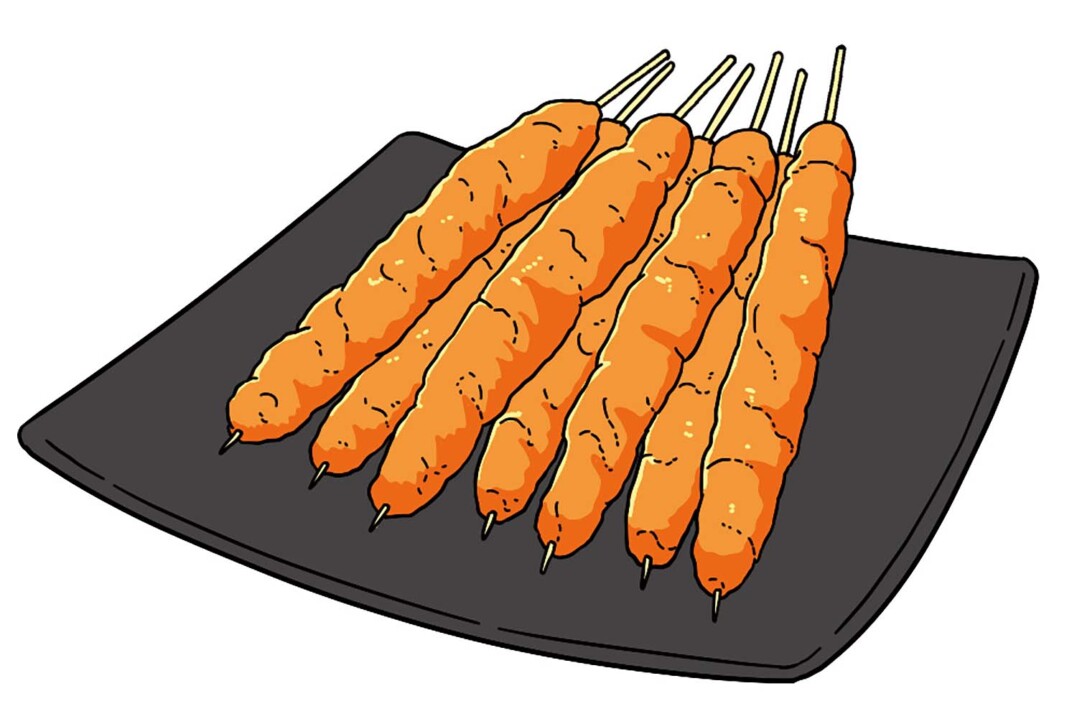
Guruguru torikawa is a hidden gem of Fukuoka cuisine. It is said that the owner of a yakitori restaurant that opened in 1968 invented this dish for his daughter, who didn’t care for chicken skin. In order to remove the rubbery texture of chicken skin, he stretched it thinly and wrapped it around a skewer, allowing the skin to be evenly cooked until crisp. The skewers are dipped into a special sweet sauce, with excess fat allowed to drip away, turning humble chicken skin into a moreish skewer sensation.
The rich chicken soup is irresistible “Mizutaki”
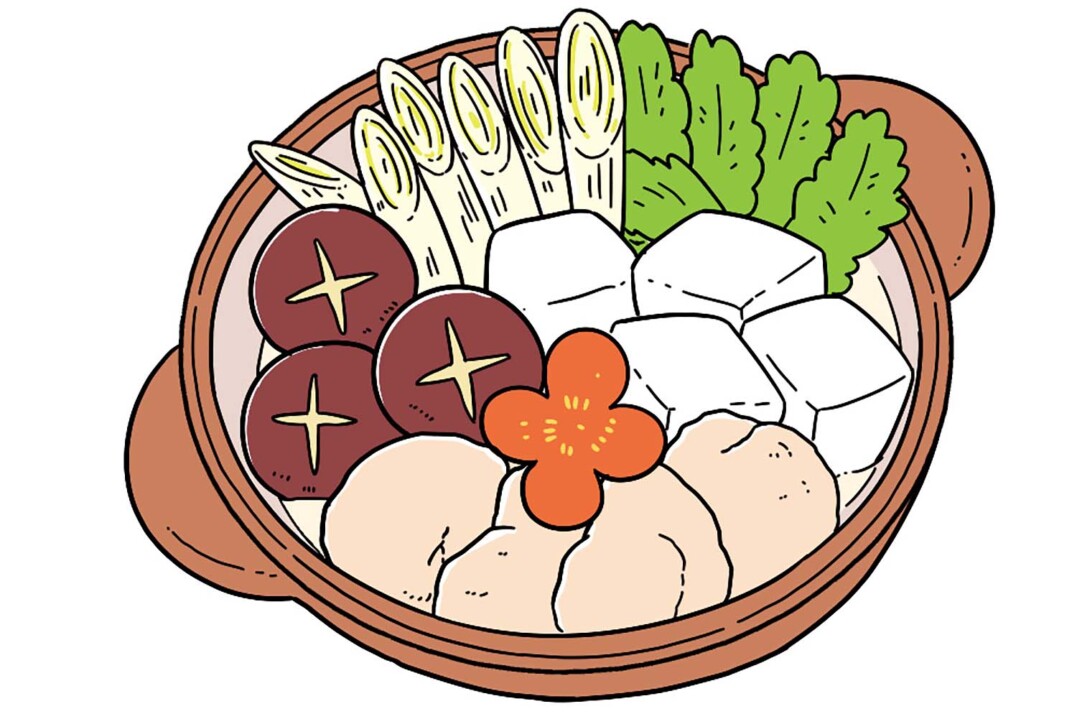
Mizutaki is a hot pot dish consisting of large, bone-in chunks of chopped chicken and seasonal vegetables simmered in chicken stock. It is thought that this dish was created by Hakata locals, who rearranged chicken dishes that came from Nagasaki. Becoming popular in the Meiji period (1868-1912), mizutaki has spread to neighboring regions.
Some restaurants use a milky, white stock, while others use a clear stock. The ingredients are dipped into a sauce of ponzu (vinegared soy sauce) and shoyu (soy sauce) before eating. It’s customary to add rice to the remaining soup and enjoy it as a porridge to finish the meal.
Soft and chewy noodles with flavor of burdock root “Gobo-ten udon”

Fukuoka is also renowned for its delicious udon noodles, and a long-beloved favorite of the locals is gobo-ten udon. This dish features characteristically tender Fukuoka udon topped with crisp, stick-shaped gobo (burdock root) tempura. The soft, fluffy noodles are a perfect match for the crunchy burdock root. The seafood-based broth is mildly seasoned with light soy sauce, however, to truly appreciate this dish, allow the tempura to sit until it imparts the rich flavor of burdock root into the soup. This popular local dish can be enjoyed at practically any udon spot.
tags:
share:








